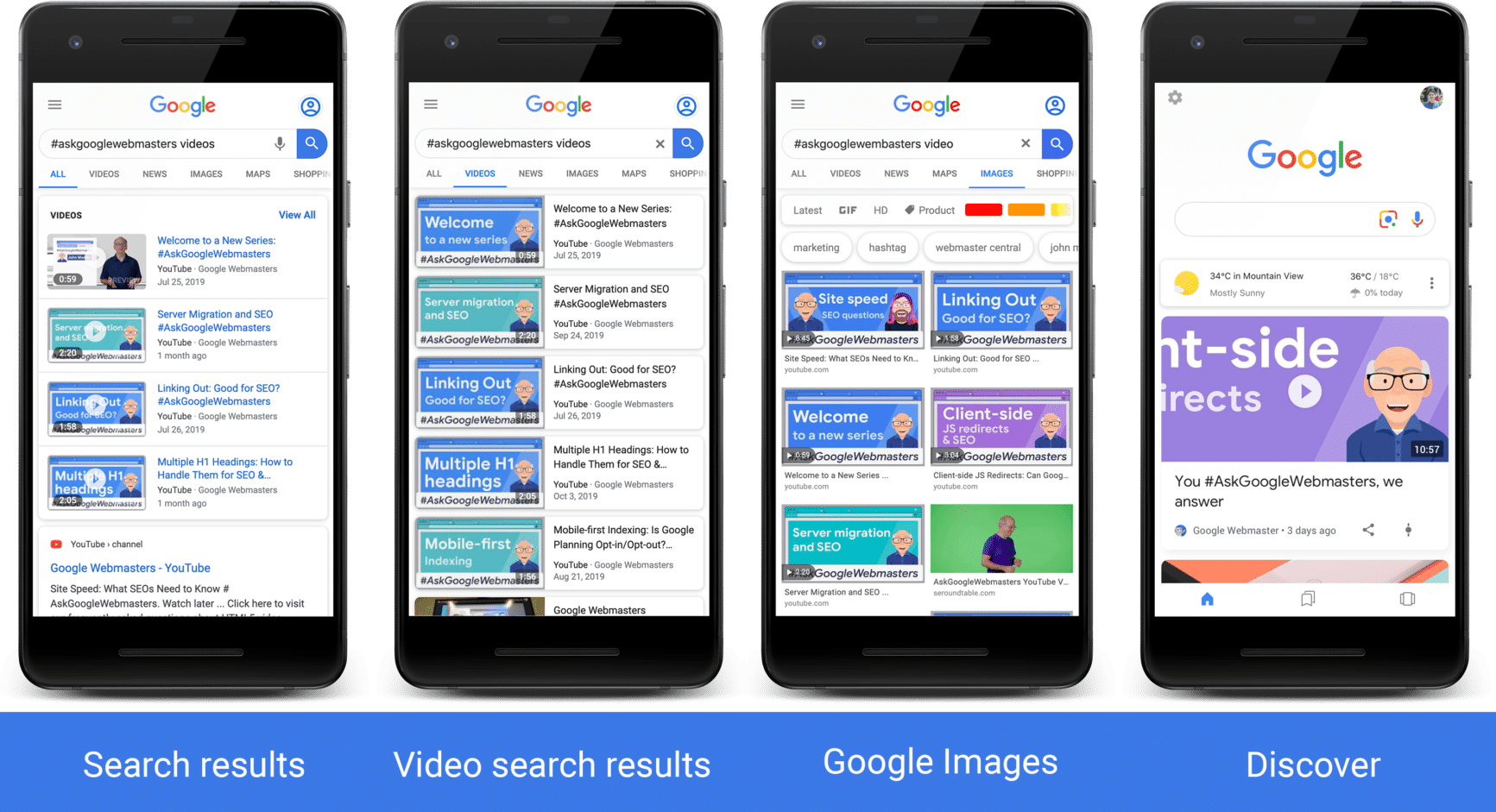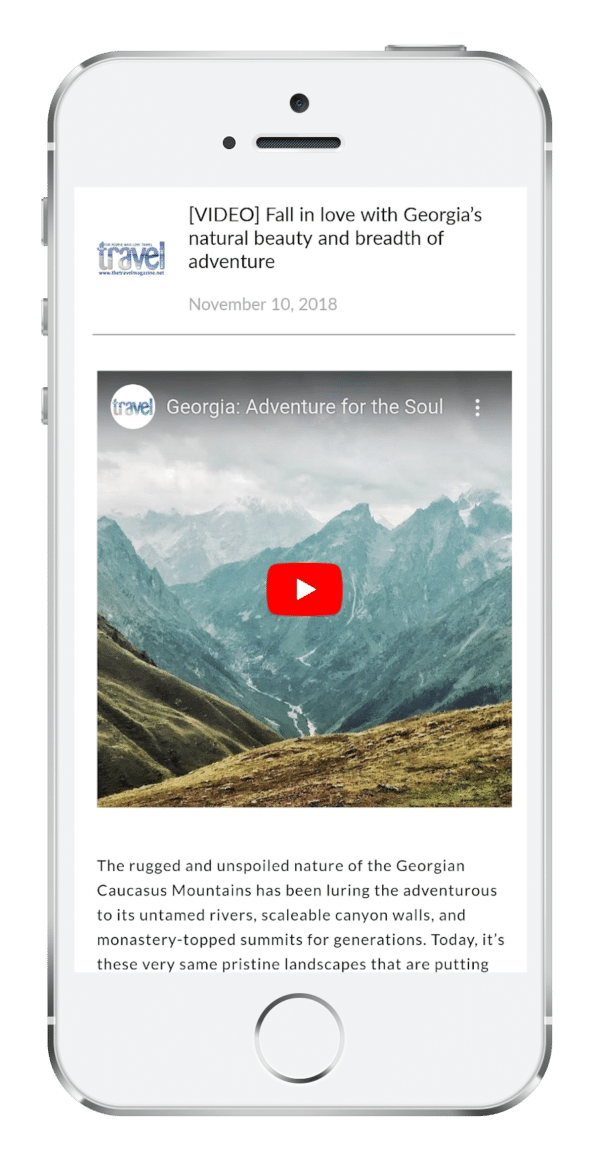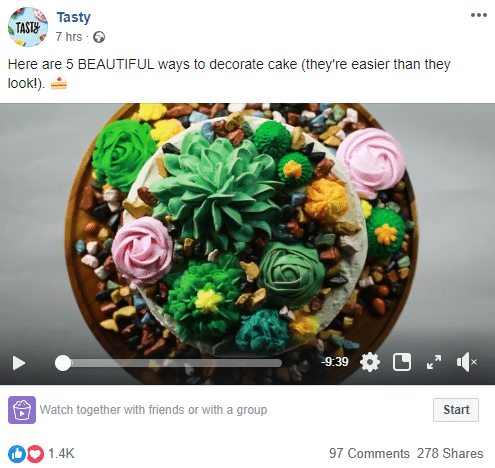The video’s overall domination in digital space is more than a prediction, it’s something that will come for sure – according to Cisco studies, by the year 2022 almost 82% of all online content will be video. The significant increase in this trend has been already seen in online campaigns of many industries, including publishing: both global and local, in its print and digital form. The goal of this article is to help video publishers in creating a winning digital content strategy.
If we consider factors like technological development, change of readers’ habits and shift towards digital publishing platforms that we have been witnessing in recent years, videos’ brilliant career isn’t something surprising.
Let’s be honest – as a consumer who scrolls through digital feeds every day, what attracts your attention more: monotonously written text or video which starts automatically the minute it appears on the screen? I bet that you’ll stop on such a video even for a while to see what it is about. This also applies to your readers: they consume tons of data (most of it on smartphones), their attention span is short and it’s hard to keep them focused on the content. There’s a challenge for video publishers to attract people and make them stay longer with the content.
Video publishers community is getting bigger
For publishers video is much more than just a method to attract readers to their brand. This is also a way to diversify distribution channels, grow a website, improve search engine optimization and effectively monetize. The data clearly shows that articles with embedded videos perform better with UX metrics like time on site and lower bounce rates. Over half of marketers claims that a video is having the highest ROI of any type of content.
Increasing popularity of online videos has its reflection in what publishers declare about their marketing strategies for 2020:
- 25,3% of publishers want to create more videos,
- they point to video publishing as the second most interesting trend for them (right after mixed-revenue models).
What seems to be the highest digital priority for publishers in 2020 though, is SEO. And this is the category in which video plays the first chair today.
Video publishers can generate great SEO results
How embedding videos can help in getting higher positions in SERPs? One of the matters is less competition rule. Dave Taylor explains it well:
For a keyword where there are 4 million Web pages, there might be a few thousand videos — or considerably less! The math is easy: do you want to compete with 4 million web pages for the user’s attention, or with a few thousand videos?
Moreover, Google’s algorithms are increasingly prioritizing websites with video content. A video put on a well-optimized website can achieve much better results in the SERPs position than a page with only written content. Adding a video to a text page enriches the page and provides more information Google can use. Additionally, videos can appear in Google Search results, video search results, Google Images, and Google Discover. For more information about enhancing your videos on Google take a look at the Google Guide.

If you want your videos to rank in Google search, publish them on YouTube.
YouTube is the second biggest search engine just next to Google and the place we go to for videos mostly. However, each of those search engines rank videos by their own rules. YouTube uses various information to create ranking such as title tag information, keywords in the description tag, number of subscribers after watching, or likes and dislikes.
Whereas Google uses a much more traditional set of algorithms. The meta data still matters but so do links to the video itself. Putting a video in different places makes more people click on it and go to your website, then Google thinks it’s something valuable and puts it higher in search. Sounds great, doesn’t it?
According to Eric Enge, a SEO expert, to rank well in both these search engines, it is useful e.g. to embed the video on your own site and promote the video via multiple channels to drive more view time, and to potentially attract links to the videos.
Where can video publishers embed their creation to maximize visibility?
- Publish a video on your website or blog. Firstly because it tells Google (or other search engines) that your page is of high quality and will keep users on your site for longer. Secondly, studies prove that people spend twice as much time on a page with video than without. If people spend more time on your website because of video watching, the chance that they will do some other action like subscribing or ad clicking dramatically increases. Many of the digital news publishers put videos on their websites – from the most well-known like The New York Times or The Telegraph to more niche ones like GrandPrix247.

- Promote your video on social media channels where people can share it easily: Facebook, Twitter, Instagram, LinkedIn. Social media are made for presenting visual content and stimulating people to comment, react, share and forward it just via one click – thanks to it you can gain both wide promotion and valuable feedback for free. When creating a post, remember to add a link to your own source: website, blog or digital kiosk. To get some inspiration, follow the National Geographic Magazine Facebook profile or Vogue on Instagram. You’ll find a lot of videos there!
- If you publish an online magazine or have a mobile magazine app, put a video inside. It raises the attractiveness of the content and you’ll present yourself as a publisher who is open to digital novelties and who moves with the times. You can read more about what modern readers expect from a digital magazine on www.jellyfishconnect.com:
Readable text and scrollable text are the two most valued functions for digital readers. Other functions readers value in a digital magazine are: website links, embedded video, back issue archives, vertical swipe, copy and paste capability and content bookmarking.
Other sources of in-app video inspirations may be mobile magazine apps like The Travel Magazine or Just the Real News.
The Travel Magazine mobile app
The choice of a place where you put videos should directly result from the goals that you have set. What do you want to achieve? Increase the time visitors spend on your website? More visits? More sold subscriptions? Which customers do you want to reach: from the top, middle or the bottom of the conversion funnel? Types of videos should also be coherent with these aims.
What kind of videos can publishers create?
- Live stream. Having a live broadcast on social media channels changes the concept of a magazine that only appears at a specific time. Thanks to this, the readers can enjoy the content without having to wait for the next issue to be published. Such a procedure increases the involvement of the readers, who have to visit your digital magazine more often than once a week or month. To begin with, it’s enough to have a smartphone and a tripod. Live videos on social media are the most engaging form of content you can offer your fans. Live events can be incredibly effective at triggering subscriptions. For example, if some event is being run live everywhere, offer exclusive interviews with the people related to it, before or after the show.
- The video tutorial works much better than a written instruction or even an infographic. It focuses on presenting more complex data in a short and more efficient form. Thanks to this you can explain, educate and inform the readers about important events and issues, giving them statistics and detailed insights. There’s no better way to improve a recipe in a cooking magazine than a video on how to make it. We can observe craziness around short movies showing easy cooking recipes (Tasty) or DIY films. Imagine how much easier it would be to assemble furniture from Ikea while watching a how-to video rather than reading paper instructions!
Tasty‘s Facebook profile is full of videos and recipes you’ll want to try
- The video commentary. The interview is one of the most popular forms of journalism. You don’t have to make a video of the entire conversation – you can simply add a short video commentary to your text, or introduce footage from the backstage. Using this kind of video is also a great idea for promoting your magazine on social media.
- The trailer video. You can announce an article or an issue that hasn’t been published yet. Such a video would work as an encouragement to purchase a particular issue of the magazine; its purpose would be to arouse curiosity and make readers come back. A good idea is to ask an important, hard or provoking question without giving an answer in the video.
There’s something that connects all these videos’ cases and it’s great.
You don’t need to hire a specialist to create them.
Take a look at celebrities publishing a lot of short videos on their social media channels. They are recorded via smartphones simply held in people’s hands, and yet they are becoming popular. Why? Because they are real, natural, spontaneous.
If you’re beginner video publishers, you can use the tool called Lumen5. It’s extremely easy, intuitive and actually pretty fun. Its free version allows us to create really nice short movies, it also includes a rich library full of free photos, videos, themes, and sounds (there’s a possibility to upload our own sources). After it’s done, you can download the video and put it everywhere you want.
What should video publishers remember about?
- Include subtitles. People watch short mobile videos when they have a free moment: in public transport, crowded places, queues, etc., so they often prefer to do it without sound.
- Make video great-looking on smartphones. It is undeniable that the design of user interfaces on smartphones favors feeds of content and video formats and helps to keep respondents in-app. On What’s New in Publishing we can read: mobile video is expected to account for 79% of mobile data traffic by 2022, aided by faster network speeds with the advent of 5G and a push towards more interactive media.
- Analyze your video performance. Monitor audience’s behavior, check how they react to your video, which one they like the most. Thanks to it you’ll create high-quality content that your users will love. The most important KPIs related to videos you can measure are:
- number of plays
- total video completions (you can also measure 25% completes, 50% completes, etc.)
- time spent watching
- To engage even further, you need to find the right distribution channels and deliver your content to the perfect audience. Embed your video not only on your social media channels but also directly in your emails.
- Use CTA buttons in your videos, encourage viewers to write a comment, share, etc. If you don’t do this, people will watch your video, leave and probably forget all about it, and you’ll lose a chance to contact them or get to know their opinions.
Video for publishers – what’s the secret of creating?
At the end I want to tell you a secret – creating videos is addictive. I guarantee that it will be a pleasure both for you and your readers.
I keep my fingers crossed for the development of your new content distribution channel.











